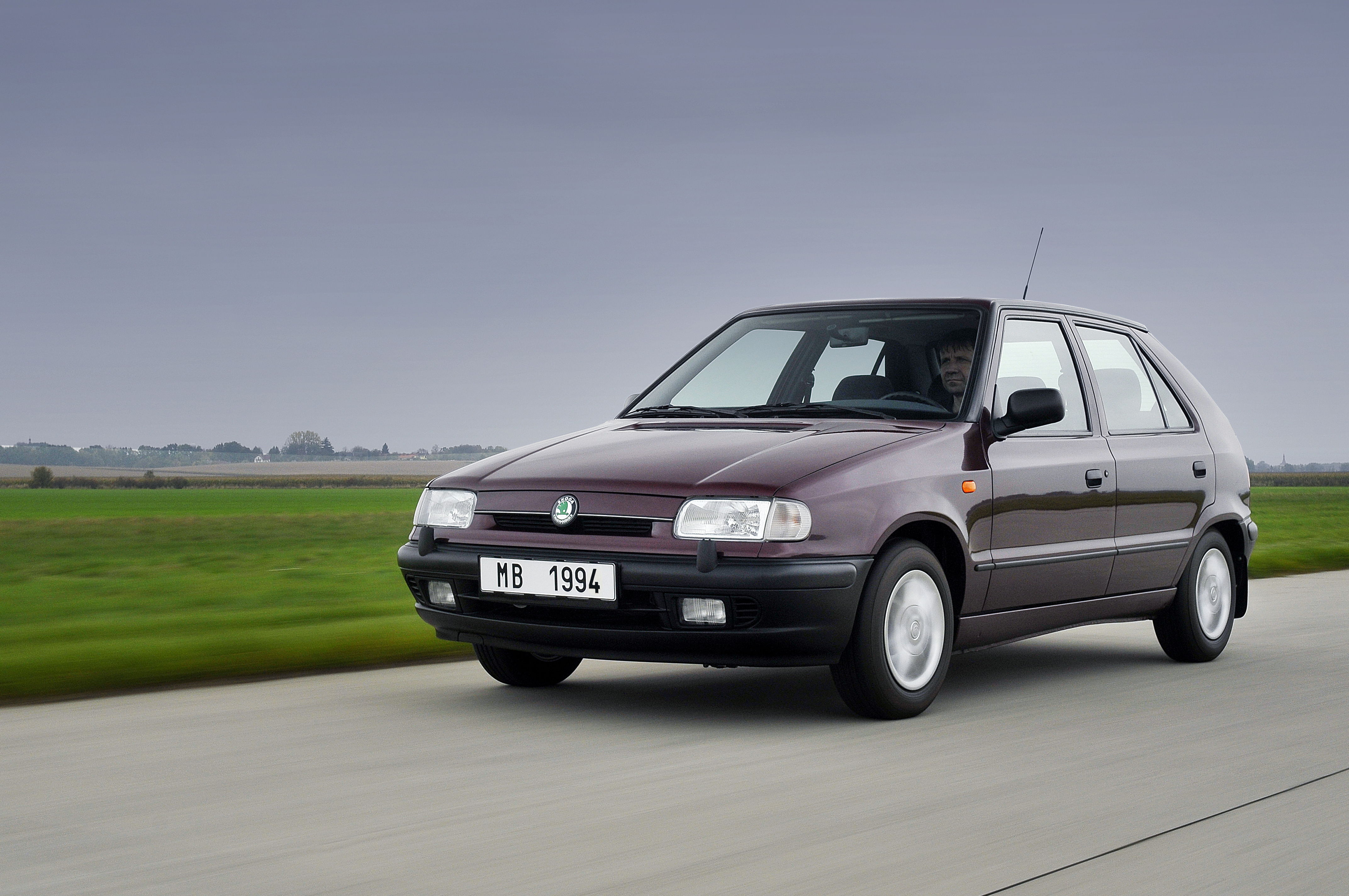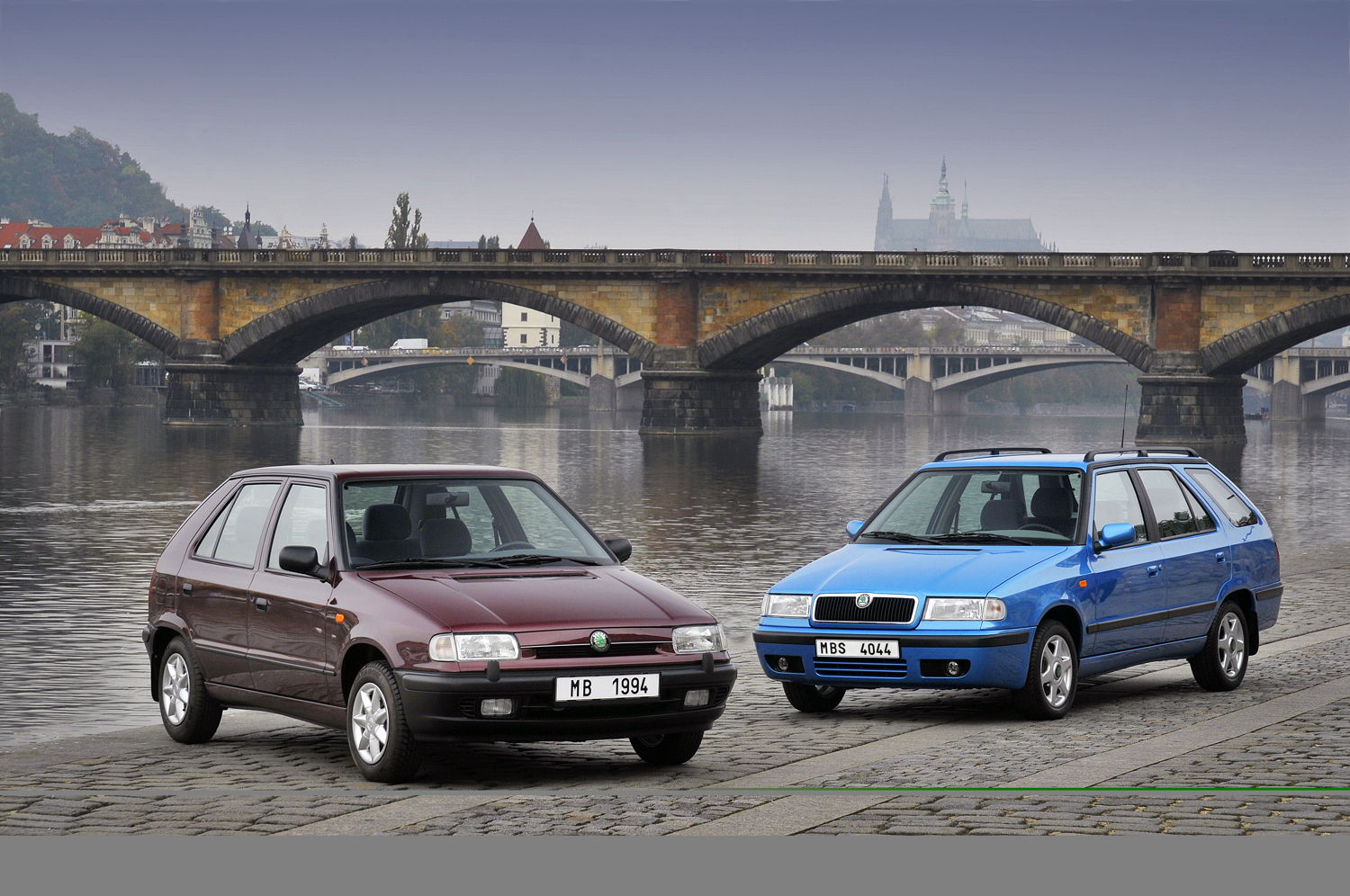Anniversary: 25 years of the ŠKODA FELICIA

- ŠKODA FELICIA was the first ŠKODA model developed under the Volkswagen umbrella in 1994
- ŠKODA AUTO manufactured 1,401,500 FELICIAs between 1994 and 2001
Mladá Boleslav, 15 October 2019 – Production of the ŠKODA FELICIA began in Mladá Boleslav on 17 October 1994: 25 years ago, the successor to the FAVORIT became the Czech carmaker’s first model to be developed under the umbrella of the Volkswagen Group. The FELICIA was successful in motorsport and was also very well received by customers: by 2001, the Mladá Boleslav, Kvasiny and Vrchlabí plants had manufactured more than 1.4 million units of this model family, which included not only the hatchback and FELICIA COMBI versions, but also the PICKUP, VANPLUS and FUN.
A new chapter in ŠKODA AUTO’s history began a quarter of a century ago with the ŠKODA FELICIA. The company had been visually modernising the FAVORIT, FORMAN and PICK-UP before joining the Volkswagen Group in 1991. Introducing the FELICIA, however, proved to be a turning point for ŠKODA: 1,187 newly developed vehicle components were used in the technically demanding redevelopment of its predecessor. The hatchback, COMBI, PICK-UP, VANPLUS and FUN model variants combined modern technology and fresh design with a spacious interior and an attractive price-performance ratio.
First three FELICIA models christened with Vltava water
Pre-series production began with the first 50 prototypes at the Vrchlabí plant on 5 September 1994. The experience gained by building these vehicles helped to optimise the manufacturing process for the FELICIA in Mladá Boleslav, which started on Monday, 17 October. The first production model rolled off the line at 10:20 the same day. Nine days later, on 26 October 1994, ŠKODA presented three new hatchback FELICIAs to the public – they were painted in the colours of the Czech national flag. The then Lord Mayor of Prague christened them on Charles Bridge with water from the Vltava.
ŠKODA had put a lot of thought into choosing the model name: On the one hand, it refers to the iconic convertible of the late 1950s and early 60s; on the other, it is derived from the Latin word for luck – Felicitas. So it was only natural that ŠKODA AUTO would donate one of the first vehicles to the Ondráček family that had just welcomed quadruplets into their family at almost the same time as the FELICIA’s christening.
Production and assembly met strict quality standards
The five-door hatchback was a significant 40 millimetres longer and 15 millimetres wider than the FAVORIT; the boot volume increased by 21 litres. The body benefitted from significantly higher torsional stiffness, which – in conjunction with new wheel carriers, improved front axle geometry and an additional stabiliser at the rear wheels – noticeably reduced interior noise and increased suspension comfort. Added to this was a higher level of safety, verified by a 1995 TÜV crash test. The production and assembly of the new model also met stringent quality standards, as evidenced by ISO standard 9002 certification. The engine production division in Mladá Boleslav was ŠKODA AUTO’s first plant to meet the high demands.
The basic engine in the ŠKODA FELICIA series was a four-cylinder petrol engine with a 1289 cm3 displacement, providing an output of either 40 kW (54 hp) or 50 kW (68 hp) depending on the variant. A more powerful 1.6 MPI engine with 55 kW (75 hp) and a 1.9-litre 47 kW (64 hp) diesel were added to the range in 1995.
Commercial vehicle variants continue the success story
In 1995, ŠKODA extended the model family to include the even more spacious FELICIA COMBI, and in August of the same year, the delivery van FELICIA VANPLUS and FELICIA PICKUP also began rolling off the production line at the Kvasiny plant. In addition, around 4,000 recreational vehicles introduced with the name FELICIA FUN were built based on the flatbed version. The model was characterised by its versatile 2+2-seater interior as well as its yellow body. The commercial vehicles were very popular: Between 1996 and 2000, ŠKODA produced nearly 19,000 units, which enjoyed success in Latin America under the name ‘Volkswagen Caddy’.
| PRODUCTION OF THE ŠKODA FELICIA | ||
| Version | Period | Quantity |
| ŠKODA FELICIA | 1994 – 2001 | 915,843 cars |
| ŠKODA FELICIA COMBI | 1995 – 2001 | 351,905 cars |
| ŠKODA PICKUP | 1995 – 2001 | 124,565 cars |
| ŠKODA FELICIA FUN/VANPLUS | 1996 – 2000 | 9,176 cars |
| TOTAL |
| 1,401,489 cars |
Note: Between 1996 and 2000, ŠKODA also built nearly 19,000 FELICIA PICKUPs under the trade name ‘Volkswagen Caddy’.
Numerous modern equipment options were introduced in the ŠKODA model range with the FELICIA, for example, ABS, up to four airbags, air conditioning, power steering, height-adjustable and heated front seats, high-quality leather seat covers and on-board computer. To commemorate the 100th anniversary of the founding of the company, the Czech brand also presented a luxury edition, the FELICIA LAURIN & KLEMENT, in 1995. Other attractive special editions, such as the FELICIA ATLANTA, followed on the occasion of the 1996 Summer Olympics. Thanks to their striking design and broad range of equipment for the price, they were also very popular.
FELICIA kit car version in the World Rally Championship
The ŠKODA FELICIA’s versatility was also demonstrated through its motorsport performance. Between 1995 and 1997, an equivalent kit car version started in the World Rally Championship, managing to secure third place in the class in its first season. In 1996, the Swedes Stiq Blomqvist / Benny Melander took third place overall in the English RAC Rally and came first in the kit car class up to 2.0 litres. In 1997, ŠKODA took second place in its class with the FELICIA in the World Championship. The new OCTAVIA Kit Car – and the OCTAVIA WRC (World Rally Car) from 1999 – continued the FELICIA Kit Car’s success.
In February 1998 ŠKODA launched the facelift of the FELICIA. The product upgrade included re-shaped modern headlamps and a customised grille. This new entry-level model adopted the new design language characterising the larger, previously released, OCTAVIA. In June 2001, the ŠKODA FELICIA’s career ended after 1,401,489 of this series had run off the production lines. Its successor, the 1999-launched FABIA, continues its success.

